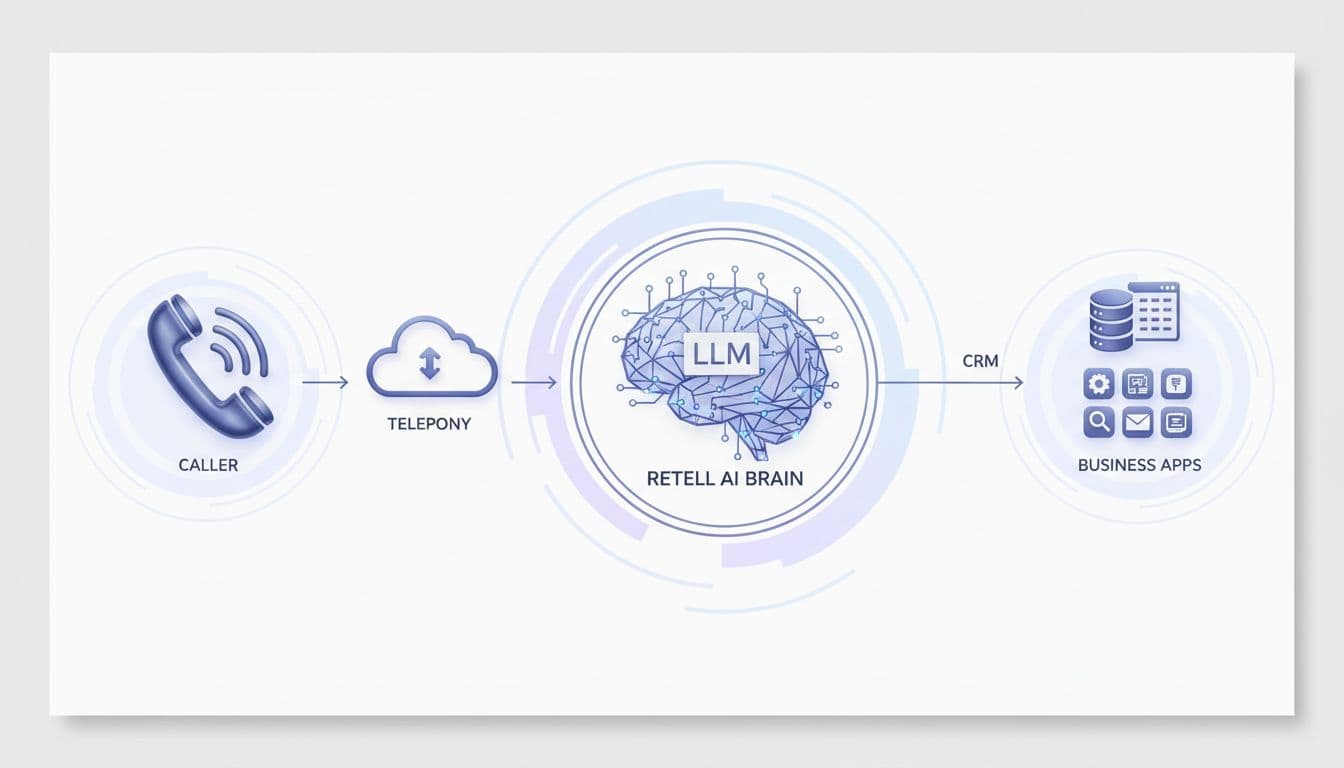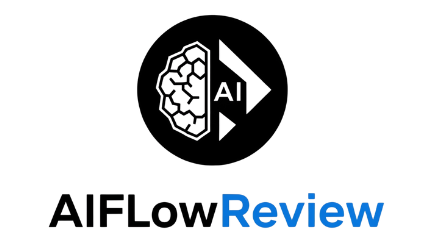If you run a team that lives on the phone, you probably feel the pressure to answer every call, qualify faster, and keep costs predictable. In this Retell AI review, I break down what it is, who should use it, real features, pricing, and how it performs in real calls as of October 2025. My lens is simple: value, speed to deploy, conversation quality, and control for developers.
In one line, Retell AI builds AI phone agents that talk like a person, handle calls, and connect to your stack. I tested voice quality, latency, LLM options, setup steps, and cost math. If you are short on time, skim the pros and cons, then the pricing math, then the one-afternoon launch plan. This will help you decide if it fits your team and budget.
 Image generated by AI.
Image generated by AI.
What is Retell AI and who will get the most value?
Retell AI builds voice-first agents for phone calls. These agents speak naturally, can be interrupted, and can complete jobs like booking, qualifying, troubleshooting, or collecting details. Think of it as a trained phone rep that never sleeps and plugs into tools you already use.
- Core idea: a voice agent with back-channeling and barge-in that feels human.
- Typical jobs: support triage, lead qualification, appointment booking, follow-ups, and after-hours coverage.
- Best fit: teams with developers who want to launch fast, scale up without drama, and keep costs clear per minute.
- Not a fit: non-technical teams that want a pure drag-and-drop studio and nothing else.
If you want a broader view of voice tools on the market, my comparison of Top AI voice generators 2025 gives helpful context before you pick a stack. See the breakdown in Best AI Music and Voice Generators in 2025 | Reviews.
How Retell AI works in plain language
- Conversation engine: The agent speaks with short pauses, usually under 800 ms between turns, so the call feels quick and natural.
- Turn-taking model: Callers can interrupt. The agent pauses, listens, then responds. This stops the “robot talk-over” problem.
- Brain choices: Teams can pick strong models like GPT-5, Claude 3.7, or Gemini 2.0, and tune for price, tone, or reasoning.
- Data control: You feed a small knowledge base for on-policy answers. Call analytics help you trim slow spots and measure results.
- Telephony: Use Twilio or SIP, or connect your custom telephony setup without ripping out your current system.
Popular use cases you can launch fast
- Support triage: collect the issue, look up the account, route to the right queue.
- Sales lead qualification: confirm intent, budget, and timeline, then push to CRM.
- Appointment booking: check rules, book a slot, send a reminder.
- Proactive batch calls: renewals, surveys, overdue reminders, and follow-ups.
- After-hours answering: capture callback details and log a ticket.
Tip: keep each flow small. One goal per call, like “verify address” or “book a 15-minute demo.” Small goals ship faster and cost less.
Who should not pick Retell AI
- Teams with no developer resources that need a full no-code studio.
- Orgs needing heavy enterprise controls and visual test labs on day one.
- Very tight budgets that cannot handle per-minute LLM costs.
- Teams that require strict, proven compliance frameworks out of the box. Test carefully and confirm requirements first.
If you want a sense of voice platform tradeoffs, my Voice AI 2025 in-depth review outlines strengths and flaws across popular tools: Voice AI Review 2025 – AI Flow Review.
Features and performance that set Retell AI apart
Retell AI stands out for calls that feel human, quick responses, and a developer-first design. The platform focuses on outcomes you can hear in recordings, not just checkboxes on a sales sheet.
- Natural voice with back-channeling: subtle cues like “mm-hmm” can make calls feel smoother.
- Low latency around 800 ms for turn-taking that feels fast and respectful.
- Multiple LLMs: pick speed and price for routine calls or depth and style for complex calls.
- Scale features: batch calling, custom numbers, and real-time analytics.
- Developer-forward: once you know your stack, builds ship quickly.
If you want to see a benchmark-style perspective on latency and scale, Retell’s own comparison of sub-second agents is a useful reference. Read the benchmarks in Retell AI vs. Synthflow vs. Twilio Voice Assistants.
Voice quality, barge-in, and turn-taking
The agent listens while it talks. If the caller cuts in, it stops immediately, then replies. That simple detail reduces frustration and dead air.
- Barge-in: callers interrupt, the agent pauses, then responds.
- Back-channeling: light cues help the conversation flow, though you should keep them minimal for professional calls.
- Accents and clarity: voices cover a wide range. Pick a friendly, neutral voice for support. Use a warmer tone for sales.
- Testing tip: record sample calls in quiet and noisy rooms. Check response time and any clipping.
For teams exploring text-to-speech quality across tools, I also cover natural voice options in my Murf AI review for natural voices: Murf AI Review 2025 – AI Flow Review.
LLM flexibility and knowledge control
Model choice drives both cost and quality. For routine steps, you can use a lighter model. For tricky, open-ended calls, switch to a stronger model.
- Options include GPT-5, Claude 3.7, and Gemini 2.0. Choose based on price, speed, and style.
- Knowledge base: reduce hallucinations by grounding answers in concise source docs.
- Prompt templates and guardrails: keep language short, safe, and useful.
- Tip: start light and escalate only when needed to lower spend without hurting outcomes.
Build and ship: integrations and workflow
Most teams connect Retell AI to existing phone and data systems, then track results with analytics and logs.
- Telephony: Twilio is common, roughly 1.5 cents per minute. SIP or custom telephony is fine if you already have it.
- Webhooks and logs: useful for traces, error reviews, and debugging call drops.
- Concurrency: the free tier supports limited concurrent calls, enough to test load and quality.
- Knowledge bases: begin small, ideally under 5 pages. Update weekly with common questions from real calls.
What is new in 2025
- Near real-time turn-taking, often under 800 ms in many use cases.
- Wider support for newer models like GPT-5 and Gemini 2.0 Flash.
- Pricing remains transparent with growing enterprise discounts.
- More tutorials to help developer-led rollouts move quickly.
Confirm model availability in your region before you commit a go-live date.
Pricing that scales: real costs for a Retell AI deployment
Pricing is mostly per minute for voice, plus model fees and telephony. You can predict spend once you fix average handle time and the model mix. Based on current public info in October 2025, here is the pattern I see in the market.
 Image created with AI.
Image created with AI.
Pay as you go costs in practice
- Voice calls: around 7 cents per minute.
- Chat: about 0.2 cents per message.
- Free credits: about 10 dollars, enough for early testing.
- LLM add-ons per minute: roughly 4 cents for GPT-5, 6 cents for Claude 3.7, and 0.6 cents for Gemini 2.0. Prices vary by region and updates.
- Telephony: Twilio often runs near 1.5 cents per minute.
- Extras after included amounts: knowledge base usage around 0.5 cents per minute, batch calls around 0.5 cents per dial, branded outbound calls around 10 cents each.
A quick rule: total per-minute cost equals voice base rate plus LLM add-on plus telephony. If you keep answers short and use a lighter model for most turns, the total stays reasonable.
Enterprise plan and volume discounts
- Starts around 3,000 dollars per month, with lower per-minute rates, sometimes near 5 cents per minute.
- Managed setup, higher capacity, and premium support.
- A good fit for steady call volume, strict SLAs, or complex integrations across teams.
Sample monthly budgets you can copy
- Light setup: 1,000 minutes per month, 4-minute average calls, lighter LLM, Twilio telephony. Expect the low hundreds.
- Growing team: 4,500 minutes per month, a mix of light and strong LLMs. Often mid hundreds, depending on call length and model split.
Real spend depends on three levers: model choice, average handle time, and how verbose the agent is.
Hidden costs and how to keep spend in check
- Keep answers short, which reduces tokens.
- Use lighter models for routine steps. Call a stronger model only when needed.
- Trim dead air and retries. Tune barge-in to avoid two-way talking.
- Watch knowledge base usage after included amounts.
- Review analytics weekly and cap minutes for test numbers.
A simple table can help planning:
Cost ComponentTypical RateBudget TipVoice per minute$0.07Shorten handle timeLLM add-on per minute$0.006 to $0.06Use light models for routine turnsTelephony per minute~$0.015Use existing numbers if possibleBatch call per dial~$0.005Run in windows to spot failures quicklyBranded outbound call~$0.10Reserve for top priority calls
Retell AI review: pros, cons, and smart alternatives
Here is the balanced view after hands-on testing and research.
What I like after testing
- Calls feel human, with quick responses and smooth interruptions.
- Pricing is modular and clear, so planning is easier.
- Strong developer controls, with a path to scale using your existing stack.
- Works across many languages and call types.
For another perspective from hands-on testers, this community review is a helpful sanity check on voice quality and interruptions: 2025 Retell AI Review on r/AIToolTesting.
Where it struggled for me
- Non-technical teams may hit a learning curve.
- Some users report occasional latency spikes, so test during peak hours.
- Fewer visual test tools than large enterprise suites.
- Enterprise plans can feel pricey for small teams.
Best alternatives to compare before you buy
- Synthflow: simpler for no-code builders, best for straightforward flows.
- Google Dialogflow CX: strong for complex call trees, with a higher setup effort and cost for many teams.
- Twilio Voice with custom code: full control if you want to build everything and own the logic.
- Industry-specific voice tools: healthcare or insurance tools with deep domain templates can speed compliance and scripts.
Who should choose Retell AI, and who should pass
- Choose it if you have developers, run a lot of calls, and want natural voice with clear per-minute pricing.
- Consider others if you need pure no-code, heavy enterprise controls on day one, or ultra-tight budgets.
- For mixed teams, launch a pilot with 50 to 100 calls. Measure handle time, success rate, and cost per successful call.
If you want a second opinion from another reviewer that focuses on developer fit and no-code tradeoffs, this summary helps: Honest Retell AI Review 2025: Pros, Cons, Features.
Setup in one afternoon: a simple launch plan
You can go from idea to live calls in a day if you keep the scope tight. Here is the checklist I use.
 Image generated by AI.
Image generated by AI.
Plan your call flow and data
- Pick one job, like “book a demo” or “reset a password.”
- Write a short script with 3 to 5 steps and clear fallback lines.
- Load a small, clean knowledge base. Skip long PDFs at first.
- Define the success metric, like bookings made or verified addresses.
Build, test, and tune
- Choose a model and set temperature low for consistent answers.
- Turn on interruption. Keep responses tight and polite.
- Run 20 to 30 test calls in quiet and noisy conditions.
- Review logs, flag slow spots, and shorten prompts.
- Track response timing, success rate, and call length after each change.
Go live and monitor like a pro
- Set alerts for failures and long silences.
- Use batch calls for follow-ups or quick surveys.
- Review analytics weekly and rotate voices if you see fatigue.
- Add a human failover number for edge cases.
- Update the knowledge base based on real questions and objections.
If you are still comparing voice platforms before launching, my Honest take on Voice AI features and flaws provides more examples to copy: Voice AI Review 2025 – AI Flow Review.
The bottom line
Retell AI is best for developer-led teams that need natural phone agents at a fair per-minute cost. Voice quality is strong, turn-taking stays quick, and the model choices help you balance price and depth. Watch the learning curve for non-technical users, test latency under load, and plan your LLM spend with short, focused prompts.
Quick checklist:
- Do we have a developer to own the agent?
- Can we start with one narrow call flow?
- Do we have a budget target per minute and per month?
- Have we tested at peak times?
If you can answer yes to most of these, run a small pilot this week. Measure cost per successful call, then scale if the numbers hold. Start small, prove value fast, and grow with confidence.

















